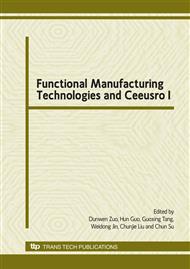p.371
p.376
p.381
p.385
p.391
p.395
p.399
p.403
p.409
Analysis of the Type of China’s Cooperative Education Model
Abstract:
This article utilizes the synthetic study method to carry on the discussion about China’s cooperative education model that has tried out in the university. In 1985, the Textile Institute of Shanghai Engineering Technology University studied the experiences of Waterloo University, they experimented one year three semesters cooperative education model jointly with 6 factories. Since then, China's colleges and universities began to experiment the cooperative education model and showed different types of it. This paper classifies and sums up the types of cooperative education model that divided by the organizational form, the production and study time and the way of cooperation in age 80-90 for the 20th century in China. The models were divided into 14 kinds of test patterns, and these models are briefly outlined.
Info:
Periodical:
Pages:
391-394
Citation:
Online since:
January 2010
Price:
Сopyright:
© 2010 Trans Tech Publications Ltd. All Rights Reserved
Share:
Citation:


